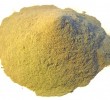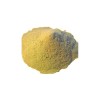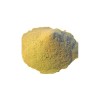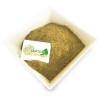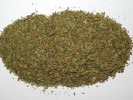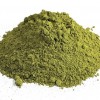Kratom: A Comprehensive Guide
Kratom: A Comprehensive Guide on its Varieties, Traditional Uses, and Current Controversies
Kratom, also known scientifically as Mitragyna speciosa, is a plant native to Southeast Asia and belongs to the coffee family (Rubiaceae). With a rich history in herbal and traditional medicine, as well as cultural practices, kratom has gained popularity in different parts of the world due to its varied effects and applications. In this article, we will explore the various varieties of kratom, its traditional uses, as well as the current controversies surrounding its use.
.
.jpg)
Varieties of Kratom
There are several varieties of kratom, each with unique effect profiles due to its particular chemical composition. Here, we present some of the most common varieties:
Kratom Bali: This kratom comes from the island of Bali in Indonesia and is known for its balance of stimulating and relaxing effects, making it a popular choice for beginners.
Kratom Maeng Da: Originating from Thailand, Malaysia, and Indonesia, this kratom is known for its potency and energizing effects, ideal for increasing productivity and improving mood.
Kratom Borneo: This variety of kratom comes from the island of Borneo and is appreciated for its relaxing and sedative effects, useful for relieving stress, anxiety and improving sleep.
Kratom Thai: Famous for its energizing and stimulating effects, this kratom is used to increase concentration and motivation.
Kratom Malay: Originating from Malaysia, this kratom offers a balance between stimulating and sedative effects, providing energy, mood enhancement, and pain relief.
Kratom Indo: Originating from Indonesia, this kratom is versatile and offers a combination of stimulating and relaxing effects, useful for relieving chronic pain and promoting relaxation.
.jpg)
Classification Kratom by Color
Kratom is primarily classified based on the color of the veins of its leaves, which can indicate its properties and effects:
Red Kratom: With red veins on the leaves, this kratom is known for its relaxing and sedative effects, useful for relieving pain, reducing anxiety, and promoting sleep.
Green Kratom: With green veins, this kratom offers a balance between stimulating and sedative effects, ideal for improving mood and relieving mild to moderate pain.
White Kratom: With white veins, this kratom is stimulating and energizing, used to increase concentration, improve motivation, and reduce fatigue.
Yellow Kratom: This strain, less common than the others, is obtained through a special drying process that may involve fermenting kratom leaves. With a distinctive golden yellow color, yellow kratom offers a unique combination of relaxing and stimulating properties. Some users report that it provides a sense of calm and well-being, along with mild energy and increased mental clarity.
.png)
Traditional Uses of Kratom
Throughout history, kratom has been used in Southeast Asia in various forms and for different purposes:
Herbal Medicine: Kratom has traditionally been used to relieve pain, fever, fatigue, and other common ailments.
Stimulant: Many cultures in Southeast Asia consume kratom as a natural stimulant to increase energy and improve mood.
Relaxant and Sedative: Some varieties of kratom, especially those with red veins, are known for their relaxing and sedative effects, useful for relieving stress, anxiety, and insomnia.
.jpg)
Current Controversies and Kratom Regulation
Despite its long history of traditional use, kratom has been the subject of controversy in recent years due to concerns about its safety and potential for abuse. Some governments have restricted its use, while advocates argue for its availability as a treatment option for pain management and other disorders.
Conclusion of Kratom
Kratom is a plant with a rich and diverse history in Southeast Asia, where it has been valued for its various effects and applications. As discussions continue about kratom regulations, it is important to consider both its potential benefits and risks, and to seek a balance between its availability and safe use. If you are considering using kratom, it is advisable to research and consult with a healthcare professional to fully understand the risks and benefits.


